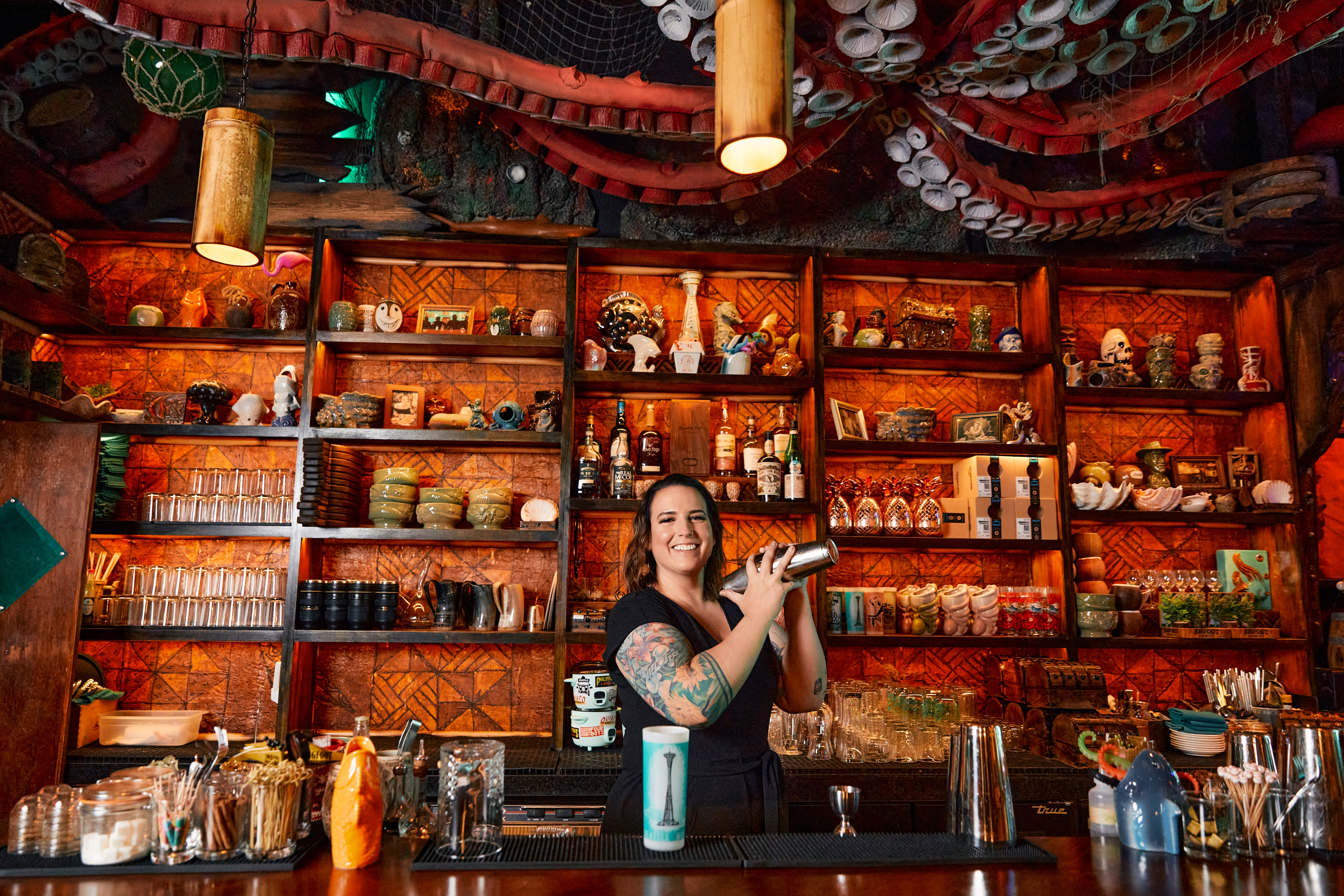The Case for Renting Your Clothes

I recently bagged up 37 dresses, mostly from the mid-2000s, that I’m ready to purge from my wardrobe. There are still many more where those came from. And yet when I stood in front of my closet, trying to find something to wear for an event at which I was speaking, I could find nothing.
It may seem like the math’s not mathing, but the reality is that no one can own every garment they might need in a particular situation. I was searching for something that looked good on stage, that I hadn’t worn to a big event before, and that fit my current body. This led me down a rabbit hole of clothing rental options until I stumbled upon one in our very own backyard: Armoire.
Based in Seattle, with a boutique in Pioneer Square, Armoire caters to women who need something to wear, whether it’s to a work conference, a wedding, or just a weekend brunch. Founder and CEO Ambika Singh was working as a management consultant while attending business school at MIT when she got the idea. “I traveled with a lot of men, and my clothing was somehow a part of my professional outcomes,” she says. “That seemed unfair and crazy to me, but since I wasn’t going to change society on a dime, I was inspired to change technology to make professional women’s lives easier.”

Image: Courtesy Armoire
The result was a service born in 2016 that matches women with clothes, using your own preferences to drive what you see of the 100,000-item collection. The algorithm gets smarter all the time as you rent, review, like, and dislike various options.
Clothing may seem frivolous, but it also matters for our well-being. That was true a century ago—when higher hemlines and corset shedding were linked with women’s increasing independence and gaining the right to vote—and it’s true today. Even practical choices, like wearing bloomers on a bike or yoga pants to run errands, can make a statement to the world about who you are and what you believe in.
While clothes have been used to oppress and diminish (try swimming in a wool skirt or playing tennis in heels), they can also be a force for good. Wearing a bright color can cheer you up (a tactic known as dopamine dressing), while something more muted can be calming. You can set the tone for the day just by what you put on in the morning: researchers at Northwestern University coined the term “enclothed cognition” to describe the influence clothes have on your state of mind. And using your wardrobe as a form of self-expression might give you the chance to explore multiple facets of your personality.
“Today I’m wearing a menswear-inspired jumpsuit; yesterday I was wearing a very feminine dress,” says Singh, who favors loud patterns and bright colors. “I can be both of those people back to back because I have the ability to express myself through my clothes.”
There have been times when Singh has wondered whether Armoire was a good thing. “Am I perpetuating stereotypes in saying, Women, you need this service because you must show up a certain way?” But during the pandemic, people continued to rent clothes, even though hardly anyone was seeing how they were dressed. The feedback she got was that it was about how the clothes made them feel—not how it made them look to others.
Singh chose the name Armoire in part because it has the same root as armor. “How we show up is impacted by our external façade,” she says. “If you think you look good on the outside, you’re going to show up better. It’s confidence inducing for you to change your armor according to what you want.”
For me, the biggest wellness benefit has been side-stepping decision fatigue. “The anxiety around deciding to own and buy something is heavy,” Singh says. Now, I spend much less time thinking about what I’m going to wear—I end up building my outfits for the month around what I rent. When I go to a special event, like the one that sent me down this path to begin with, I have something bright and shiny to don. (Quite literally, in this case, as I picked a sequined green dress.) And I don’t have to worry if something is worth the investment to get a permanent slot in my closet. It’s all temporary, so I can try something new without concern about whether I’ll wear it enough times to make it a smart purchase. (Singh understands me. “I over-index on all the analysis. I just can’t do that with my clothing on top of everything else,” she says.)
Fashion can also be a way to bond. My best friend and I get together monthly to go to Armoire’s boutique and weigh in on each other’s choices, and we even plan outings based on what we rent. One time, we got contrasting jumpsuits and went on a “jumpsuit date” to drink tropical concoctions under a tentacled sea monster at Inside Passage. Another time, we found ourselves in matching faux-fur coats dining on dessert at 13 Coins.
Analysis is mixed on whether clothing rental is better for the environment than buying, once you factor shipping and cleaning into the equation. But Singh points out that the average garment is worn just seven times, while those in Armoire’s rental pool are taking 30-plus turns. I walk to and from the boutique to exchange my clothes, so I’m lowering my personal impact, too (and getting some extra steps in).
As someone who’s worked from home for more than a decade, I spend the majority of my time in a mix of athleisure and pajamas. But when I want to actually, you know, leave my house, it’s nice to feel good about what I’m wearing.




